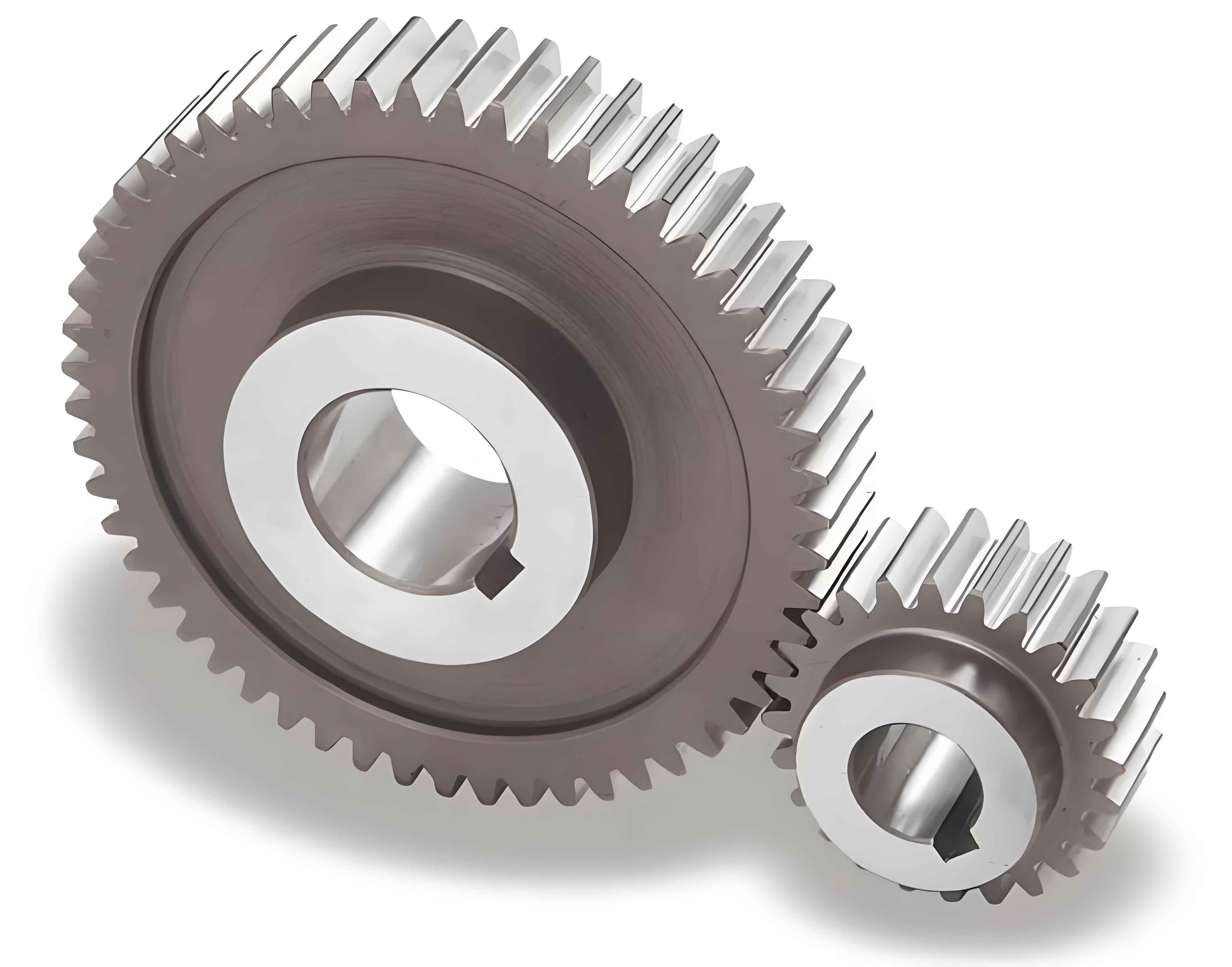Heat treatment processes are essential in enhancing the performance and longevity of spur gear by improving their mechanical properties, such as hardness, toughness, wear resistance, and fatigue strength. Here’s an overview of how different heat treatment methods influence spur gear performance:

1. Case Hardening
- Process: Involves hardening only the surface layer of spur gear teeth while maintaining a tough and ductile core.
- Methods:
- Carburizing: Heating the spur gear in a carbon-rich environment to introduce carbon into the surface layer, followed by quenching and tempering.
- Nitriding: Introducing nitrogen into the surface layer at a lower temperature than carburizing, leading to a hard and wear-resistant surface.
- Carbonitriding: Combining carbon and nitrogen introduction at a lower temperature than carburizing.
- Benefits:
- Wear Resistance: The hardened surface resists wear and abrasion, enhancing spur gear lifespan.
- Fatigue Strength: A tough core helps absorb impact and resists fatigue cracking.
- Dimensional Stability: Controlled heat treatment minimizes distortion, maintaining precise spur gear geometry.
- Applications: Automotive spur gear, industrial machinery, and heavy-duty applications.
2. Through Hardening
- Process: Heating the entire spur gear to a high temperature followed by quenching, resulting in uniform hardness throughout the spur gear.
- Methods:
- Oil Quenching: Commonly used for medium to high-carbon steels.
- Water Quenching: Used for low-carbon steels but can cause more distortion and cracking.
- Air Quenching: Used for alloy steels to minimize distortion.
- Benefits:
- Uniform Hardness: Provides consistent strength and wear resistance throughout the spur gear.
- High Load Capacity: Suitable for applications where the spur gear must withstand high loads.
- Drawbacks:
- Brittleness: The spur gear may become brittle if not properly tempered.
- Distortion: Higher risk of warping and dimensional changes.
- Applications: Smaller spur gear, less critical applications where uniform hardness is advantageous.
3. Induction Hardening
- Process: Heating the spur gear teeth rapidly using induction coils followed by immediate quenching, hardening only the surface.
- Benefits:
- Selective Hardening: Only the teeth are hardened, preserving the toughness of the core.
- Short Processing Time: Rapid heating and quenching reduce overall processing time.
- Minimal Distortion: Precise control over heating reduces the risk of warping.
- Applications: High-precision gears, automotive transmissions, and other applications requiring surface hardening with minimal distortion.
4. Tempering
- Process: Following quenching, the spur gear is reheated to a lower temperature and then cooled, reducing brittleness while maintaining hardness.
- Benefits:
- Toughness Improvement: Reduces brittleness and improves toughness.
- Stress Relief: Relieves internal stresses introduced during quenching, reducing the risk of cracking.
- Applications: Applied after case hardening or through hardening to balance hardness and toughness.
5. Cryogenic Treatment
- Process: Cooling the spur gear to cryogenic temperatures (below -190°C) to transform retained austenite into martensite, followed by tempering.
- Benefits:
- Dimensional Stability: Reduces retained austenite, ensuring stable dimensions over time.
- Wear Resistance: Enhances hardness and wear resistance.
- Fatigue Life: Improves fatigue resistance, extending spur gear life.
- Applications: High-performance gears in aerospace, motorsports, and other demanding applications.
Summary of Heat Treatment Processes and Their Effects
| Heat Treatment Process | Key Effects on Gear Performance | Typical Applications |
|---|---|---|
| Case Hardening | Enhances surface hardness and wear resistance, tough core | Automotive gears, heavy machinery |
| Through Hardening | Uniform hardness, high load capacity | Smaller gears, less critical applications |
| Induction Hardening | Selective hardening, minimal distortion, rapid processing | High-precision gears, automotive transmissions |
| Tempering | Reduces brittleness, improves toughness and stress relief | All heat-treated gears to balance properties |
| Cryogenic Treatment | Reduces retained austenite, enhances wear resistance and dimensional stability | High-performance gears in demanding environments |
Conclusion
Heat treatment is a critical step in the manufacturing of spur gear, significantly influencing their performance and longevity. By selecting the appropriate heat treatment process, manufacturers can enhance the mechanical properties of gears to meet specific application requirements, ensuring optimal performance and extended service life. Each heat treatment method offers distinct advantages and is chosen based on the desired balance between hardness, toughness, wear resistance, and dimensional stability.
